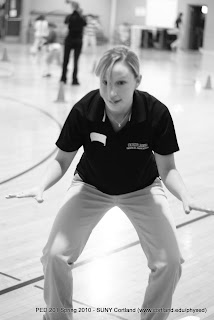The three main critical issues facing children today are: childhood obesity that is on the rise rapidly, in-school and community violence among our youth, and early puberty that has psychosocial ramifications. Childhood obesity is an alarming issue in our society today. The combination of poor diets and not being active is a major issue that is resulting in childhood obesity. There is an enormous rise of in-school violence today that has our society alarmed. Physical educators can play a major role in helping make our schools and communities places that are safe and free of violence.
The physically educated person should be defined the following ways, physically fit, someone who values physical activity and its contributions to a healthy way of living, and has learned skills necessary to perform different physical activities. The three factors that explain the relationship that lead to the development of the whole child are the biology of an individual, requirements of the movement task, and conditions of the learning environment.
Individual appropriateness is when the education is geared toward and individual because each child is unique and develops differently as well as at different rates. Group appropriateness is education geared towards a group of individuals that is being taught based on curriculum and is not based on chronological age.
Three examples of locomotion movements would be leaping, walking and hoping. Some examples of manipulation movements would be kicking the soccer ball, volleying the volley ball and throwing a baseball. Axial movements involve bending, stretching, turning, twisting, and swinging. Some examples of static/dynamic movements may be rolling and dodging. Two components that define physical fitness are health-related and performance-related. Health-related components include muscular strength, muscular endurance, cardiovascular endurance, joint flexibility and body composition. Some performance-related components are coordination, balance, agility, power, and speed.





